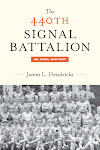The Torrens and the 440th Signal Battalion arrived in Brisbane on a clear, warm winter day. The bulk of the officers and men were taken by truck to a holding area within the city limits of Brisbane while a detachment remained at the dock to supervise the unloading of their equipment. The unloading process required several days and this gave HQ Company an opportunity to catch up on records and other paper work. It was also a time for most of the battalion to rest a little.
The area the battalion settled into had been a race track before the war. For the second time, the 440th made its quarters in buildings and areas originally intended for horses. It was called Camp Doomben and was located on the grounds of the Eagle Farm Race Track. Eagle Farm Air Field was just to the north of the camp.
Within a day or two, small numbers of men were allowed three and six hour passes, allowing them to leave the staging area and visit Brisbane for a few hours. For most, this was their first taste of the civilian world since before leaving Spokane. Most of the men were responsible but a few were overwhelmed by the free-flowing Aussie beer and the open-arm welcome offered by the Australians. All were happy to be able to leave the confines of camp and to enjoy the chance of ordering a meal of their own choosing.
While the 440th was in Brisbane, it suffered its first fatality. Private First Class George F. McClung was struck and fatally injured by a city bus. He had stepped away from a curb and looked in the wrong direction for oncoming traffic. He had been a member of A Company.
On 2 ,the 20 officers and 541 men of the 440th - including equipment and some supplies - boarded a train at Camp Ascot. After a two day trip on the cramped and stuffy small-gauge railway, they arrived at the coastal city of Townsville on the 4th. In commemoration of the tragic accident in Brisbane, the Battalion Commander dedicated the camp cite Camp George F McClung.
After establishing camp, the battalion's Company A began a project of adding overhead wires to an existing Australian line between Townsville and Charters Towers, 100 miles to the SW. In order to sped completion, work was started in Charters Towers as well as in the middle of the new line resulting in each of the three teams working toward the other two. The line took only a few days to finish.
The first platoon of A Company had received orders to leave Camp McClung and board a ship bound for Port Moresby, New Guinea, which they did on 17 August. No one in the battalion could have imagined that mid August 1942 would be the last time for nearly three years that the entire unit would be together in one location. Nor could the men in First Platoon, A Company, have imagined what road they would travel over the next three years.
The New Guinea Jungle period for the 440th Signal battalion was about to begin.
skip to main |
skip to sidebar
Documenting the 65-year history through personal stories, photographs, and other records
Please provide your story!
Were you in the 440th? Do you have a story to tell? A photograph to share? Share your story here.
The 440th Signal Battalion: An Oral History
Visit the book website here.
Other Sites of Interest
Search This Blog
Blog Archive
-
►
2007
(3)
- ► 07/08 - 07/15 (1)
- ► 11/11 - 11/18 (1)
- ► 12/23 - 12/30 (1)
-
▼
2008
(5)
- ► 01/27 - 02/03 (1)
- ► 02/10 - 02/17 (1)
-
►
2009
(1)
- ► 10/11 - 10/18 (1)
-
►
2010
(1)
- ► 06/20 - 06/27 (1)
About Me
- James L Hendricks
- I was drafted in September 1952 and, after basic training and signal school, assigned to the 440th Signal Battalion. In June 1954 I was honorably discharged after serving in Korea. I recently finished writing a book about the battalion’s sixty-five-year history--The 440th Signal Battalion: An Oral History.



